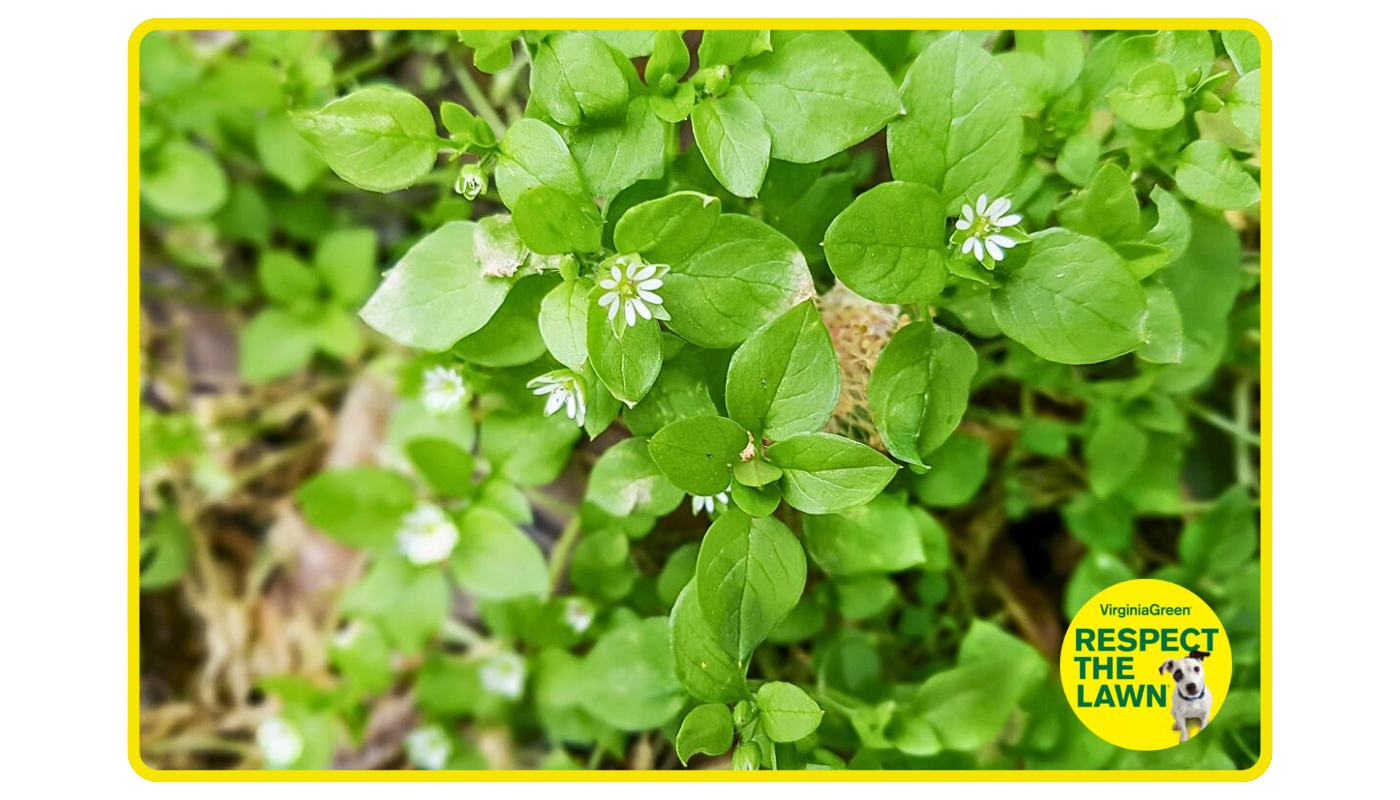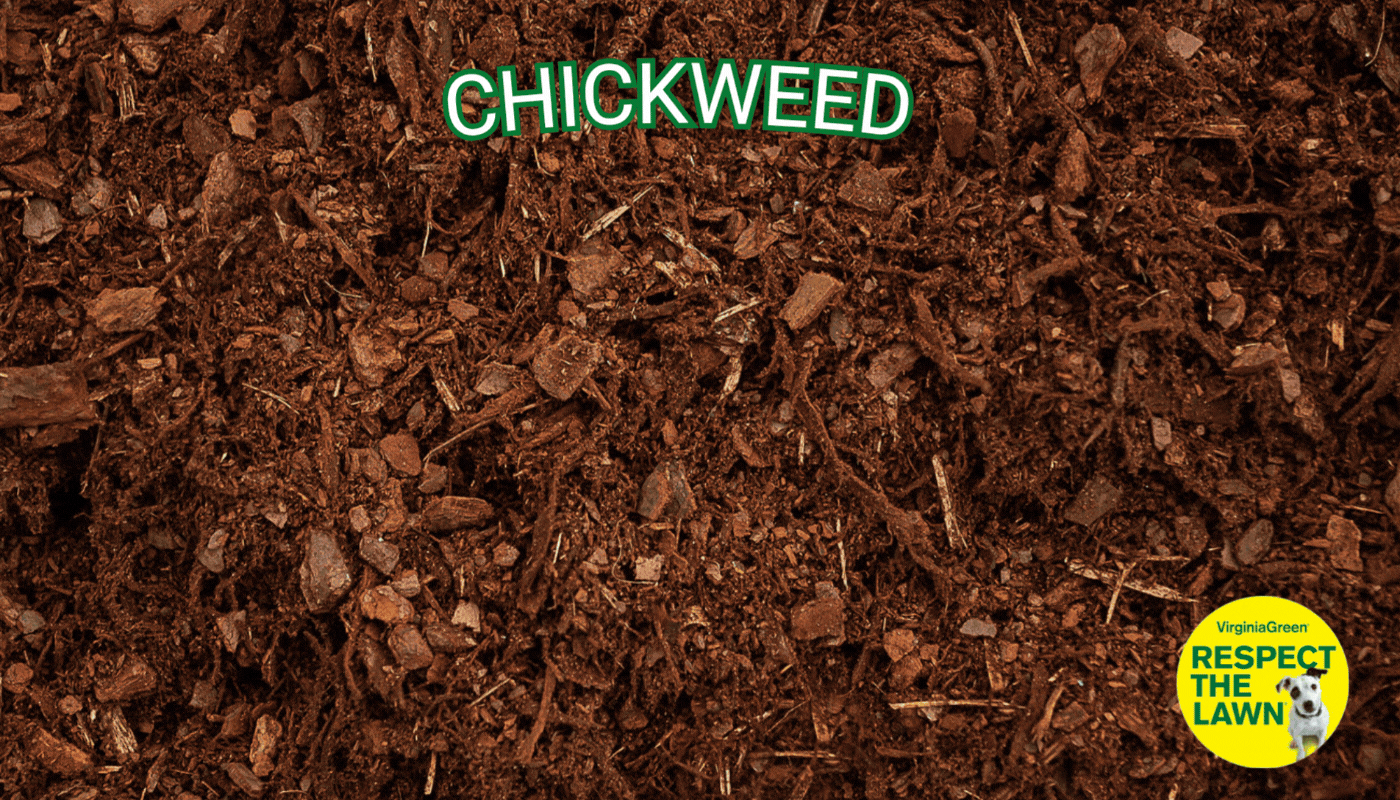Chickweed
Common Chickweed has the ability to produce over 1,0000 seeds per plant and has a short germination period, resulting in 2 generations of the plant per year on occasion! This, among other things, is one of the main reasons you might want Chickweed out of your lawn and gardens.
Chickweed (Stellaria Media)
Winter Annual
Common chickweed spreads in extensive mats as a low-growing succulent in shady, cool areas that offer sufficient moisture. Its foliage is yellow green with broad leaves that are opposite one another. Seed leaves have prominent midveins and are about four times as long as they are wide; whereas mature leaves are ovate and opposite on the stem. Its small flowers feature five deeply cut white petals. Stems oftentimes feature a line of hair down the side.

Identifying Chickweed
Chickweed is found in many environments in turf, including areas of both sun and shade. This weed prefers high fertility soils, especially ones that are nitrogen rich. Common chickweed produces one or two generations per year and can occasionally act as a short-lived perennial.
The young plant generally grows low before turning upwards and flowering. It has long, branching stems that grow flat along the soil’s surface and roots at leaf nodes. The low-growing succulent appears in the late fall, going dormant until Spring and flowers in the early summer.

You can identify Chickweed using the following visual cues:
- Prostrate growth pattern. Young Chickweed grows close to the ground and then turns upward before growing leaves and flowers
- Leaves have opposite arrangements in pairs on stems. Leaves towards the bottom of the stem have slightly fuzzy stalks. Those towards the tops are sans stalks and attached directly to stem.
- Individuals are ovate, or egg shaped and are pointed at the tip with smooth edges.
- Flowers are small and show at the tips of stems. Each flower has 5 deeply divided petals which may resemble 10 upon first glance.
- Flowers are surrounded by 5 green sepals.
- Chickweed stems can grow over a foot in height.
Why You Should Remove Chickweed from your Yard
Common Chickweed has the ability to produce over 1,0000 seeds per plant and has a short germination period, resulting in 2 generations of the plant per year on occasion! This, among other things, is one of the main reasons you might want Chickweed out of your lawn and gardens.
Common Chickweed is fairly competitive and can grow year-round in areas with moist soil. It has a high mowing tolerance and can prove to be difficult in removal. High amounts of chickweed can outcompete turfgrasses for nutrition and sunlight.
When and How to Remove Chickweed
Much like other weeds, Common Chickweed is controlled best by pulling the entire plant out by the root. If pulled, make sure you practice proper lawn care with good mowing habits, solid irrigation methods and routine fertilization, creating strong a strong lawn to outcompete weeds naturally! Selective postemergent weed control is also highly effective at controlling Chickweed, especially when you are looking to avoid damaging your lawn.

Need Help Tackling Weeds?
Our agronomists (soil scientists) can give your lawn the attention it deserves.